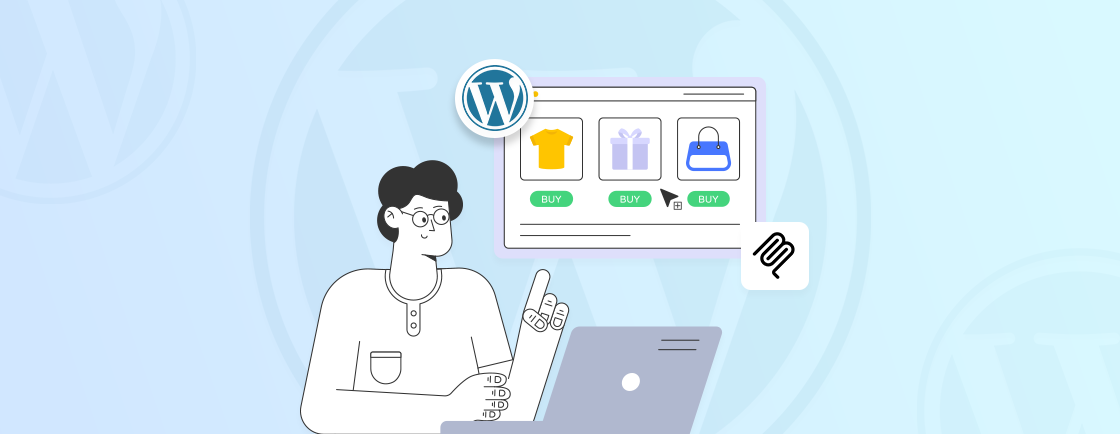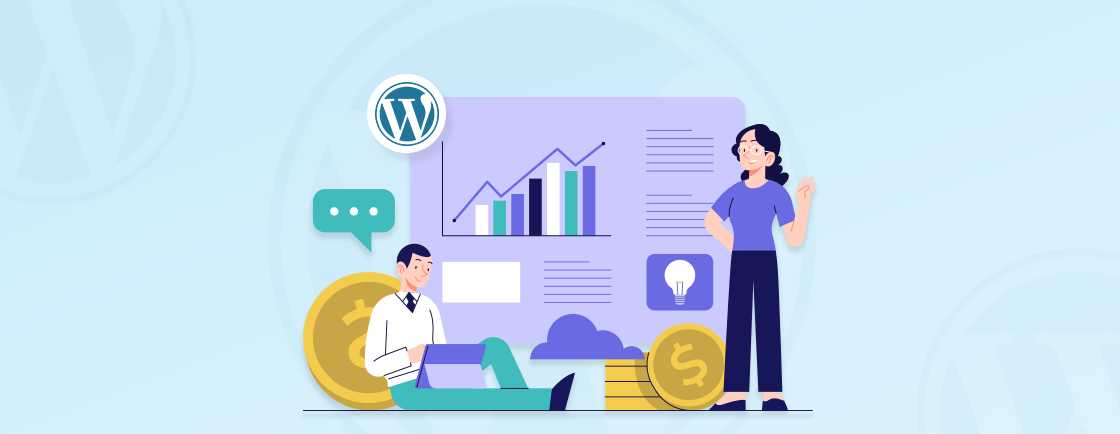Table of Contents
Your website’s favicon—the tiny icon displayed in browser tabs—may seem minor, but it’s a critical branding element. A missing or outdated favicon can make your WordPress site look unprofessional, but a well-designed one boosts recognition and trust.
Whether you’re rebranding or setting up a new site, updating your favicon is a quick yet impactful task. So this blog will serve as a guide to changing the favicon via the built-in options, theme settings, and plugins. Let’s begin.
What is a Favicon?
A favicon (short for “favorite icon”) is the small image displayed in browser tabs, bookmarks, and search results next to your website’s name. Typically 16×16 or 32×32 pixels in size, this tiny graphic helps users quickly identify your site among multiple open tabs.
Originally introduced by Microsoft in Internet Explorer 5, favicons have become a standard web element. A well-designed favicon reinforces brand identity, improves user experience, and adds a professional touch to your WordPress site.
Common choices include simplified logos, initials, or symbols that remain recognizable even at a small scale. For example, the lowercase ‘f’ in blue color instantly says Facebook. And, the uppercase ‘G’ in RGBY color scheme is Google.
So why might you change the favicon of your WordPress website?
Why Change Your Favicon in WordPress?
As I mentioned before, the favicon plays a key role in your website’s brand and identity. So there are several compelling reasons to change your favicon in WordPress, beyond just having one in the first place.
Here’s a breakdown of some key benefits:
- Enhances Recognition: A custom favicon should align with your brand logo and colors. It helps users easily recognize your website in a sea of open tabs and bookmarks.
- Professional Appearance: A unique favicon contributes to a polished, professional look, reinforcing your brand’s identity.
- Easier Navigation: Favicons help users quickly identify your site among multiple open tabs, bookmarks, and history entries. That improves the overall browsing experience.
- Increased Visibility: A distinct favicon can make your site stand out. It encourages users to return more frequently.
- SEO Signals: While not a direct ranking factor, a well-branded website, including a custom favicon, can enhance user engagement and trust. It can indirectly benefit SEO.
- Trust and Credibility: Users are more likely to trust a site that looks complete and professional. A missing or default favicon might make the site appear less legitimate.
- Unique Identity: Setting your favicon apart from competitors’ helps differentiate your site, making it more memorable to visitors.
Overall, changing your favicon is a simple yet effective way to personalize your WordPress website. If you prioritize favicons in design to not only enhance the branding and user experience, hire dedicated WordPress Developers from WPWeb Infotech.
How to Change Your Favicon in WordPress?
Changing your favicon in WordPress can be done using various methods. Like, using WordPress customizer, dedicated favicon plugin, or manual addition. Each method offers its own set of advantages and customization options.
#1 Using WordPress Customizer
Here’s how you access the WordPress Customizer and change the favicon with it.
Step 1: Log in to your WordPress admin dashboard.
Step 2: In the left-hand menu of the WordPress settings, go to ‘Appearance’ and then select ‘Customize’. This will open the WordPress Customizer interface.
Step 3: Within the Customizer, click on the ‘Site Identity’ option.
This section allows you to set various aspects of your site’s identity, including the title, tagline, and site icon (favicon).
Step 4: Find the Site Icon section. Here, you’ll see an option to upload an image. Click on the Select Site Icon button.
A media library window will appear. You can either select an existing image from your media library or upload a new image from your computer. For best results, use a square image that is at least 512×512 pixels.
Step 5: After selecting or uploading the image, you might be prompted to crop it to ensure it fits the required dimensions. Adjust the cropping box as needed and click ‘Crop Image’.
The Customizer will display a live preview of your site, including the new favicon. Make sure the favicon appears as expected.
Step 6: Once you are satisfied with the changes, click the ‘Publish’ button at the top of the Customizer panel to save and apply your new favicon.
Customizer is user-friendly and gives you an immediate preview of the design customizations.
#2 Using WordPress Plugins
One of the highlights of WordPress is its extensive range of plugins. Installing a WordPress plugin can help you integrate advanced features and functionalities in the site without coding.
Step 1: Install a WordPress plugin like Favicon by RealFaviconGenerator, All In One Favicon, etc.
After activation, you should see a new menu item related to the plugin, often under Settings or as its own item in the WordPress dashboard.
Step 2: Click on the plugin’s settings or configuration link. This typically takes you to the plugin’s configuration page.
Step 3: On the plugin’s configuration page, click Select Image to upload a new image. Or choose an existing image from the WordPress media library. Ensure the image is at least 512×512 pixels for optimal results.
Step 4: In the plugin, you can set different favicon sizes for various devices and platforms.
Adjust settings according to your preferences. You can specify settings for Android, iOS, Windows, and more to ensure your favicon looks great across all devices.
Step 5: Once you’ve uploaded your image and adjusted the settings, click the Generate Favicon button (or something similar).
The plugin will automatically generate all necessary favicon files and code snippets.
Step 6: Recheck the generated favicon previews and save the changes.
Check your site on different devices and browsers to verify that the new favicon is displayed correctly.
#3 Using the Manual Method
Create a favicon using graphic design software or an online favicon generator. Ensure the image is square, and the recommended size is at least 512×512 pixels for best results. Save the file in .ico format, though modern browsers also support .png, .gif, and .svg formats.
Step 1: Access your WordPress file and directory structure. You can do so with the help of an FTP client or using cPanel.
Step 2: Locate the header.php file in the theme folder and open it in a text editor.
SStep 3: Within the <head> section of the header.php file, insert the code snippet:
<link rel='icon' type='image/x-icon' href='path/to/your/favicon.ico' />
Remember to replace path/to/your/favicon.ico with the actual file path on your server.
Best Tips for Favicons in WordPress Websites
Let’s discuss a few tips that can help design and set the best favicons on your WordPress website.
- Simple and Clear: Favicons are tiny, so keep the design simple and clear. Opt for recognizable icons or symbols that represent your brand. Avoid complex details or text that will be illegible at a small size.
- Branding Consistency: Ensure your favicon aligns with your overall website branding. Use colors, shapes, or elements that complement your logo and website design.
- Readability Across Backgrounds: Since favicons can appear over various backgrounds, choose colors that offer good contrast for readability. A transparent background using a PNG format can also be helpful.
- Recommended Size and Format: Use a square image sized between 512px x 512px and 1024px x 1024px in PNG format. This ensures compatibility with different browsers and devices.
- Multiple Favicon Files: While not always necessary, consider using a favicon generator to create a set of favicon files in various sizes and formats for optimal compatibility. These files might include favicon.ico, apple-touch-icon.png, etc.
- Caching and Visibility: Be aware that it can take some time (usually a few hours or even a day or two) for your new favicon to appear everywhere due to browser caching. Clear your browser cache to see the update immediately, but understand it won’t affect how quickly others see it.
By following these tips, you can create a well-designed and technically sound favicon. It will effectively represent your WordPress website and enhance user experience.
If you need help with the design aspects of your WordPress website (like favicon), you can opt with our web design services.
Let’s Conclude
A well-designed favicon can act as a tiny brand ambassador, subtly reinforcing your website’s identity and boosting user experience. Whether you use the WordPress Customizer, a plugin, or manual code, the process is quick and straightforward.
Remember to:
✔ Use a high-quality, square image (512×512 pixels works best).
✔ Clear your cache if the new favicon doesn’t appear immediately.
✔ Test across browsers and devices to ensure visibility.
If you need help with customizing your website, consult with our experts today!
FAQs on Changing Your Favicon in WordPress
What’s the ideal favicon size for WordPress?
The recommended size is 512×512 pixels (WordPress automatically resizes it). However, browsers display it at 16×16 or 32×32 pixels, so ensure your design remains clear when scaled down.
Why can’t I see my new favicon right away after changing it?
This is due to browser caching. It can take some time (usually a few hours or even a day or two) for your new favicon to appear everywhere online. Clearing your browser cache can help you see the update immediately, but it won’t affect how quickly others see it.
I’m not comfortable with code editing. Can I still change my favicon?
Absolutely! The WordPress Customizer and favicon plugins offer user-friendly interfaces for uploading your favicon image without needing to touch any code.
How do I restore the default WordPress favicon?
Simply remove your custom favicon from Appearance > Customize > Site Identity, and WordPress will revert to a blank or theme-default icon.
Create with WordPress CMS
Build flexible and scalable websites using WordPress's powerful content management system.





